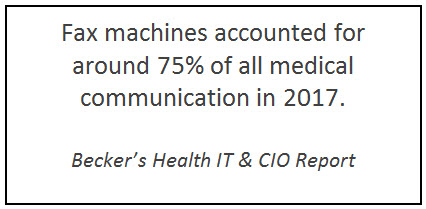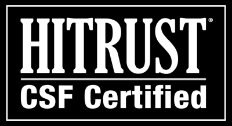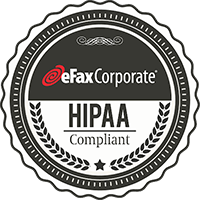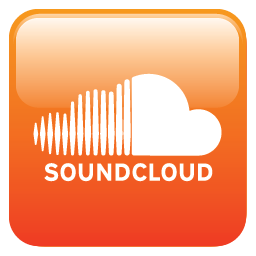Don’t wait for 2020!
Health care providers are in a 1990’s time warp…where doctors are faxing patient records, medical staff are manually entering results into EHRs, and hospitals are handing out data on a CD-ROM.Those words were spoken recently by Seema Verma, Administrator of the Center for Medicare and Medicaid Services (CMS), lamenting the awkward state of healthcare IT in the United States at an interoperability conference in the nation’s capital.
Verma, who is arguably the most influential public health official in government today, admits that we have come a long way since 2008, when adoption of health IT was limited to 17% of doctors and 9% of hospitals. Today, 78% of doctors and 96% of hospitals use certified health IT, including electronic health records systems (EHRs) to manage at least some of their patients’ data.
But that big push to get doctors to use Electronic Health Records came at an even bigger cost than the $35 billion of tax payer money spent on the effort.
…the new technology is making their work more difficult, not less – causing more physician burden and burnout. Because of it, doctors today are still recording their notes on paper, and they are still faxing patient records, Verma asserted.
Help us make every doctor’s office in America a paperless fax free zone by 2020, she asked the developers in the audience.
But the continued presence of paper-based records is merely a symptom of an underlying problem, which is the lack of interoperability between the various vendor’s EHRs. Because those electronic systems do not interoperate, medical administrators are having to print out 100-page medical records and manually fax them to send an order or referral or submit a claim for payment.
And the problems go much deeper than the need for paper faxes. The lack of interoperability between systems limits healthcare providers’ ability to exchange information about patients that could lead to better decisions being made. Having to start from scratch with each new patient leads to unnecessary or duplicative testing, which increases hospital costs and reduces efficiency.
‘Promoting Interoperability Programs’ Replaces ‘Meaningful Use’
That is why CMS this week issued a new set of regulations aimed at promoting interoperabilty among EHRs beginning in 2019. Under the new Final Rule for Promoting Interoperability Program (formerly known as the Medicare and Medicaid Electronic Health Record Incentive Programs), CMS is making interoperability priority-one in order to facilitate data sharing among providers and access to medical records by patients.
The underlying aim of the original EHR Incentives Program was to provide incentive payments to health professionals and hospitals that demonstrate meaningful adoption, implementation, upgrading, or meaningful use of health technology. However, in the rush to digitize health records in response to the incentives and penalties imposed by Meaningful Use, lack of interoperability between the various EHR vendors, along with other shortcomings, led to less than optimal outcomes for clinicians and patients alike.
The demand for interoperable data platforms has been long coming. As healthcare providers began shifting their records to these new electronic platforms in the early 2000s, the well-respected nonprofit Healthcare Information and Management Systems Society (HIMSS) defined the meaning of “interoperability” in the context of a health information system.
HIMSS wanted to ensure that different health information systems (EHRs) would be able to talk to each other, exchange patient data seamlessly, and present that data in a way that would make it easily understood and actionable for the recipient.
To address these and other challenges, the Office for the National Coordinator (ONC) for Health Information Technology, an office within the US Department of Health and Human Services (HSS), issued a 10-year roadmap to nationwide interoperability (including the use of APIs), by 2024. The following year Congress passed the 21st Century Cures Act of 2016 (Cures Act), which required the HHS and the ONC to improve the interoperability of health information.
Most recently, at the HIMSS18 Global Conference & Exhibition, CMS Administrator Seema Verma unveiled CMS’s plans for a complete overhaul of the Meaningful Use program, which would be replaced Promoting Interoperability (PI) programs. Key goals of the aptly named programs include an increased focus on EHR interoperability and improving patient access to health information.
Fax fixes the interoperability problem—for now
In the meantime, given that the industry is still years away from a universal standard for healthcare information exchange, hospitals, doctors’ offices, insurance providers, pharmacies, and other healthcare organizations need to share information quickly. The solution has been to stick with an aging and inefficient analog technology: fax machines.
The reality for most healthcare providers is that the lowest common denominator of communication is the venerable fax machine, because all other providers have them, and most insurance carriers require claims and other forms to be submitted by fax or, even worse, by postal mail.
Imagine a physician needs to send out an insurance request to approve lab tests for a patient. Her staff can quickly pull together all of the relevant information from the office’s EHR system—patient details, insurance information, lab-test billing codes, etc. But the insurer requires all such requests sent to their offices via fax.
This means the doctor’s office administrator will need to print a hardcopy of the patient record from their EHR (which can run to over 100 pages), draft a cover sheet for the fax, double check that the fax number is correct, walk over to and feed the pages into their office fax machine, hoping it doesn’t jam, and wait for the delivery confirmation to be returned.
What’s more, the insurer at the other end will need to carefully review the paper document when it reaches their fax machines or fax servers—because each doctor’s office fills out these requests in slightly different ways—and then input all of the data back into their own digital system.
Not exactly an interoperability success story, is it?

Fax isn’t going away anytime soon
Nor can healthcare providers expect that faxing will simply fade away on its own. Despite all the renewed calls for interoperability, the industry is still dependent on the fax protocol for sensitive data exchange, and the technology is thoroughly embedded in the workflow processes of many large provider and payer organizations.
That is why, according to a study covered in Becker’s Health IT & CIO Report, fax machines accounted for around 75% of all medical communication in 2017.
So, if the HHS and the industry’s thought leaders are calling for digital patient data exchange and system interoperability, but at the same time many healthcare and payer organizations still need to communicate by fax, what is a health provider to do?
The paperless solution: cloud fax
There is one solution that meets the demands of both of these constituents, and it is available today. That solution is cloud faxing—specifically, a cloud fax solution that can be embedded directly into your organization’s EHR system.
With the HIPAA compliant cloud fax solution from eFax Corporate, healthcare providers and other covered entities can digitally send, receive, and store ePHI-based faxes—far more easily, cost-effectively, and securely than with traditional fax infrastructure, without ever printing a single sheet of paper.
With eFax Corporate, administrator Verma’s goal of a paperless, faxless office by 2020 is fully achievable today, with no need for investment in new software systems.
But eFax Corporate also offers another series of benefits specific to health providers’ goals of meeting the industry’s interoperability standards for digital data exchange.
Because the eFax Corporate API integrates easily into EHR platforms, healthcare companies of all types can embed cloud-faxing capability right into their digital systems, so their staff can send faxes electronically without ever having to leave their EHR interface.
Here are a few ways this cloud fax EHR integration can benefit your organization:
• Cloud faxes sent through your EHR platform can be delivered directly into your recipient’s system. This means your staff can easily “fax” documents such as lab results, clinical summaries, and continuity-of-care records without having to print or scan hardcopies or even leave the EHR system.
• Faxes can have barcodes added to them and can be routed on the basis of those same barcodes, all within the cloud fax system.
• Because they are faxing through the eFax Corporate platform, your staff will be able to preserve and archive not only digital copies of the fax documents themselves but will also have access to the metadata surrounding each fax—time sent, delivery confirmation, number of pages, etc.—which can help with compliance, internal record-keeping, and fax-usage allocation.
• Because digital cloud faxes sent via eFax Corporate replace the unstructured data (such as the handwritten notes on a hardcopy fax cover sheet) with discrete, structured data, this method of faxing can help streamline document exchanges and lead to improved patient care and improve your company’s operations.
The healthcare industry has a long way to go before it reaches universal interoperability standards for digital patient data exchange. But your organization can make a large stride in that direction by embedding eFax Corporate’s HIPAA compliant cloud fax solution into your EHR platform.











